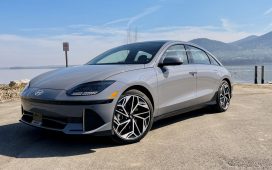Right now Tesla sells the most EVs in the US — and has been making a profit on them alone since 2021. The second largest producer of EVs in the country is Ford, but it has been posting more than a billion dollars in losses for the first two quarters of this year on its Model e electric vehicle division. Other pure EV players like Rivian and Lucid aren’t making money on their vehicles and on are hanging on thanks to outside investors.
EV demand is still on the rise, but its rate of growth is fluctuating in the US, causing manufacturers to modify their EV rollout strategies and incorporate more hybrids into the mix. A big thing holding EVs back are their high costs, but customers can get tax incentives from the federal government up to $7,500 to help with the purchase. However, the credits are only for EVs built domestically with stringent rules on vehicle pricing and battery materials sourcing — rules designed to stay competitive with China, which is building more EVs for cheaper.
Only a handful of GM-made vehicles like the Chevy Equinox and Blazer EV qualify for incentives right now, but it’s making investments to lower battery prices and get those tax incentives for consumers. One of GM’s big new plans is to open a new battery cell development center in 2027 in Warren, Michigan. GM is also building a new $3.5 billion EV battery plant in Indiana with Samsung SDI as well as another in Lansing, Michigan with LG. GM and LG have also increased production at currently operational plants in Spring Hill, Tennessee and Warren, Ohio.
According to The New York Times, GM will collect around $800 million in subsidies from the government for manufacturing EV batteries in the US thanks to the Biden administration’s Inflation Reduction Act.
GM also plans to reduce battery costs by incorporating lower-cost lithium iron phosphate (LFP) batteries in future EVs, like Tesla and Ford already do. The chemistry generally nets a lower overall driving range for EVs after a full charge compared to the more expensive nickel cobalt manganese (NCM) batteries GM installs in most of its current EV models.
However, GM thinks its range won’t suffer by much: all GM EVs today get approximately 300 or more miles of range, comms VP Darryll Harrison tells The Verge, and it expects to pack “over 350 miles” of range into its larger LFP vehicles.
GM has one of the most affordable EVs on the market, the Chevy Equinox, which costs below $30,000 after tax credits. It doesn’t have Apple CarPlay for those who care, but neither does Tesla, which sells the ultra-popular Model 3 sedan for about $35,000 after incentives.











